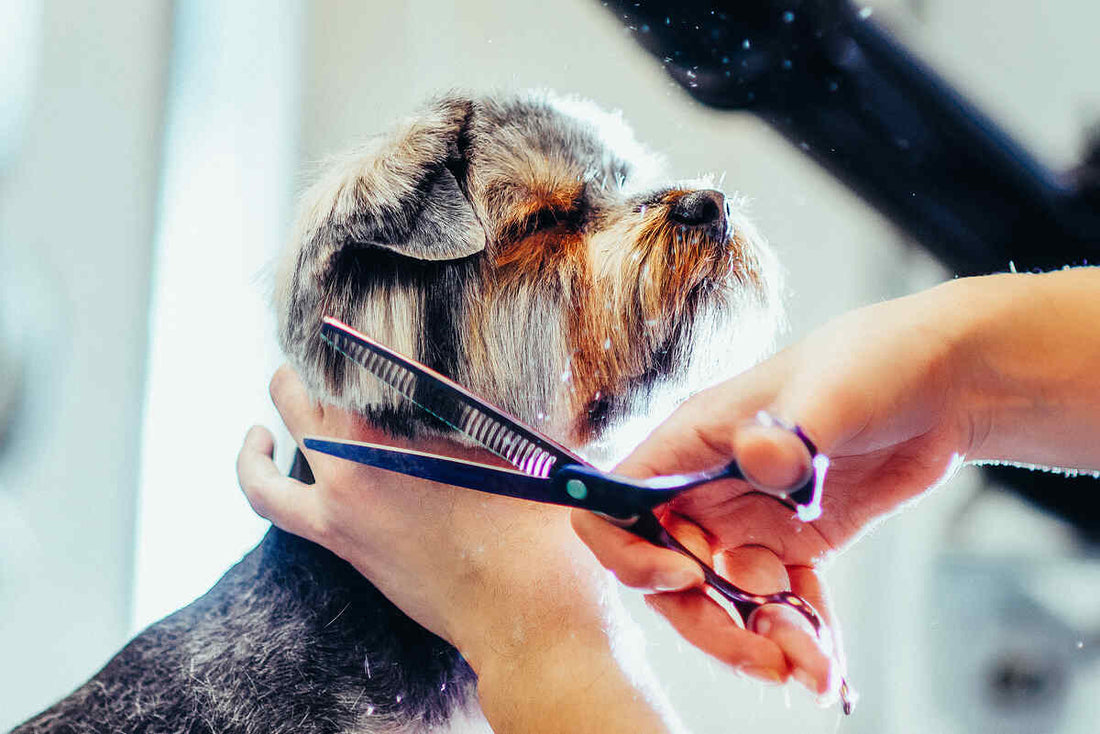
When Will My Dog Stop Shedding? Shocking Insights Await!
Share
As a devoted pet owner, you've likely found yourself asking, 'when will my dog stop shedding?' The annoying reality of canine shedding can often leave you feeling frustrated as you constantly clean up fur from your clothes, carpets, and furniture. Shed hair is a natural part of your dog's life, but if you're a health-conscious pet owner, understanding what causes shedding and when to expect it to die down is essential.
This article aims to shed light on all the unknowns surrounding dog shedding and provide you with practical solutions to manage it effectively. From grooming techniques to dietary tips, consider this your go-to guide for understanding your pup's shedding habits.

Understanding Shedding Patterns
Before diving into when you can expect your dog's shedding to reduce, it's crucial to understand why and how dogs shed in the first place. Shedding is a natural process for dogs, linked to their health, age, and environment.
Why Do Dogs Shed?
Dogs shed for multiple reasons, including:
- Seasonal Changes: Many dogs undergo a significant change in shedding patterns based on the seasons. They typically shed their thicker winter coat in spring and regrow it in winter.
- Health Issues: Conditions like allergies or skin infections can lead to excessive shedding. If you suspect your dog's shedding is not normal, consult your veterinarian for advice.
- Age: Puppies may shed less than adult dogs, but as dogs age, their shedding can become more pronounced due to hormonal changes and a decline in skin health.
Life Stages and Shedding
The amount of shedding can vary over your dog's life stages:
- Puppy Stage: Puppies often shed less frequently and in smaller amounts. Little shedding is normal for most pups.
- Adulthood: Adult dogs may experience consistent shedding year-round, but heavy shedding can correspond to the shedding seasons.
- Senior Stage: Older dogs may have changes in coat quality, which can result in increased shedding. Hormonal shifts and health conditions also tend to increase in senior dogs.

When Should You Expect Shedding to Improve?
So, when will my dog stop shedding? While it varies by breed, age, and individual factors, the seasons play a significant role in determining when shedding occurs. Expect to see the most significant shedding during:
- Spring: As your dog begins to prepare for warmer months, you'll notice more hair around your home.
- Fall: As temperatures drop, dogs will often shed their lighter summer coat and grow a thicker winter coat.
If you notice excessive shedding outside of these cycles, consult your veterinarian to rule out any underlying health issues. For more information on causes of shedding, be sure to check out our detailed guide.

Managing Your Dog's Shedding
While you may not be able to completely eliminate shedding, there are several methods to help manage it. Here are some valuable tips:
Grooming Techniques
Regular grooming can significantly reduce the amount of hair that ends up around your home. Here are some grooming tips:
- Brush Regularly: Daily brushing can help remove loose fur before it starts falling around your home. Depending on your dog's coat type, you may need different brushes.
- Bathe Wisely: Giving your dog the occasional bath can help reduce shedding. Use dog shampoos designed for shedding.
- Invest in Quality Tools: Invest in high-quality grooming tools such as de-shedding brushes to help manage shedding efficiently.
Nutrition Impact
Your dog's nutritional intake plays a critical role in their coat health.
- High-Quality Diet: Feed your dog a balanced, high-quality diet rich in essential nutrients. Foods rich in Omega fatty acids can promote a healthy coat.
- Hydration: Ensuring your dog has plenty of clean water can prevent dry skin, which often exacerbates shedding.
For in-depth details about certain supplements that can help with shedding, check out our article on supplements.

Health Issues and Shedding
If your dog's shedding becomes excessive or changes abruptly, it could indicate a health issue. Be on the lookout for:
- Allergies: Fido may be allergic to pollen, dust mites, or food, leading to increased shedding.
- Parasites: Fleas, ticks, and mites can all cause skin irritation and subsequent shedding.
- Skin Conditions: Conditions like dermatitis can lead to excessive shedding and discomfort.
If you suspect a health issue related to shedding, don't hesitate to consult your veterinarian. For more on how to cope with a shedding dog, visit our guide on living with a shedding dog.
Dealing with the Shedding Season
Handling dog hair during shedding season can be daunting. Here are a few additional tactics:
- Vacuum Daily: Keeping up with regular cleaning can help you manage hair accumulation.
- Designate Pet-Friendly Zones: If possible, designate certain areas of your home where your dog can shed without much concern.
- Use Covers: Protect your furniture with removable and washable covers that you can clean regularly.
For more insights on how to navigate dog shedding, you can read about shedding duration.
FAQs
1. Is it normal for dogs to shed all year round?
Yes, while many dogs experience significant shedding during seasonal changes, some dogs shed throughout the year. Breed is an essential factor.
2. What can I do if my dog's shedding is excessive?
If your dogs shedding seems excessive, it's best to consult your veterinarian to rule out any health problems.
3. Are there specific breeds that shed more than others?
Yes, breeds like Golden Retrievers, German Shepherds, and Huskies are known for heavy shedding. For more about shed-prone breeds click here.
As an Amazon Associate, I earn from qualifying purchases.
